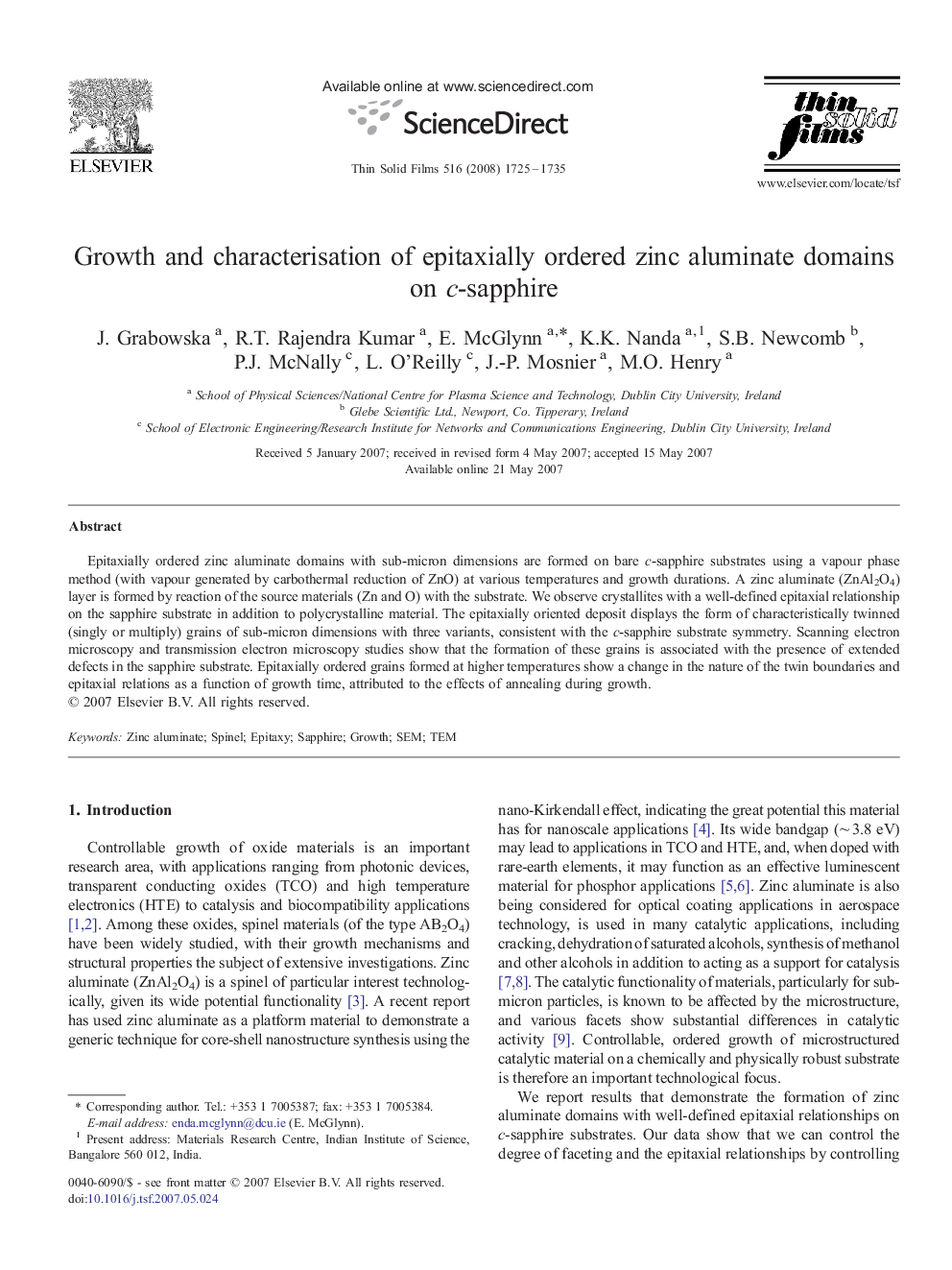| Article ID | Journal | Published Year | Pages | File Type |
|---|---|---|---|---|
| 1674259 | Thin Solid Films | 2008 | 11 Pages |
Abstract
Epitaxially ordered zinc aluminate domains with sub-micron dimensions are formed on bare c-sapphire substrates using a vapour phase method (with vapour generated by carbothermal reduction of ZnO) at various temperatures and growth durations. A zinc aluminate (ZnAl2O4) layer is formed by reaction of the source materials (Zn and O) with the substrate. We observe crystallites with a well-defined epitaxial relationship on the sapphire substrate in addition to polycrystalline material. The epitaxially oriented deposit displays the form of characteristically twinned (singly or multiply) grains of sub-micron dimensions with three variants, consistent with the c-sapphire substrate symmetry. Scanning electron microscopy and transmission electron microscopy studies show that the formation of these grains is associated with the presence of extended defects in the sapphire substrate. Epitaxially ordered grains formed at higher temperatures show a change in the nature of the twin boundaries and epitaxial relations as a function of growth time, attributed to the effects of annealing during growth.
Related Topics
Physical Sciences and Engineering
Materials Science
Nanotechnology
Authors
J. Grabowska, R.T. Rajendra Kumar, E. McGlynn, K.K. Nanda, S.B. Newcomb, P.J. McNally, L. O'Reilly, J.-P. Mosnier, M.O. Henry,
